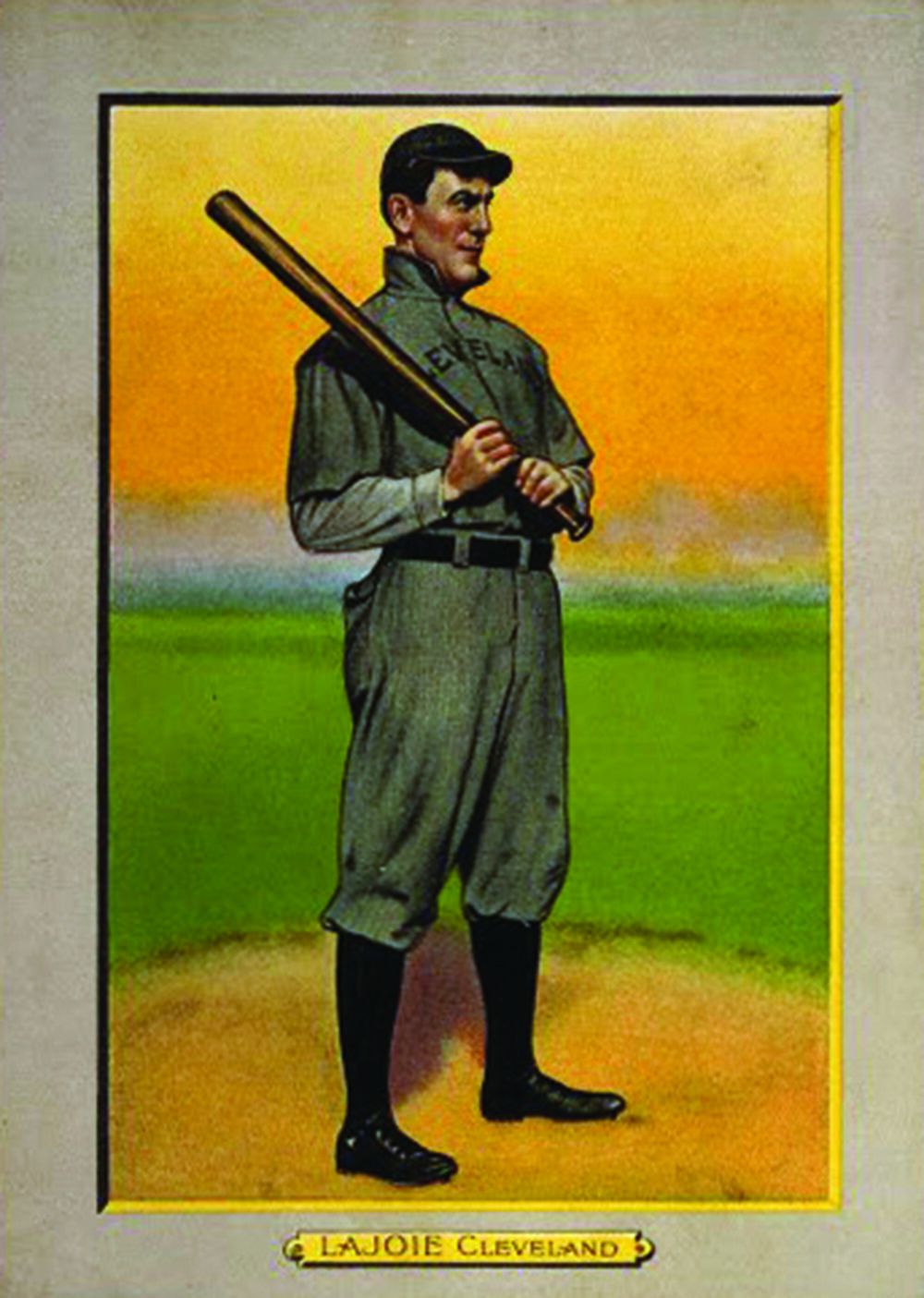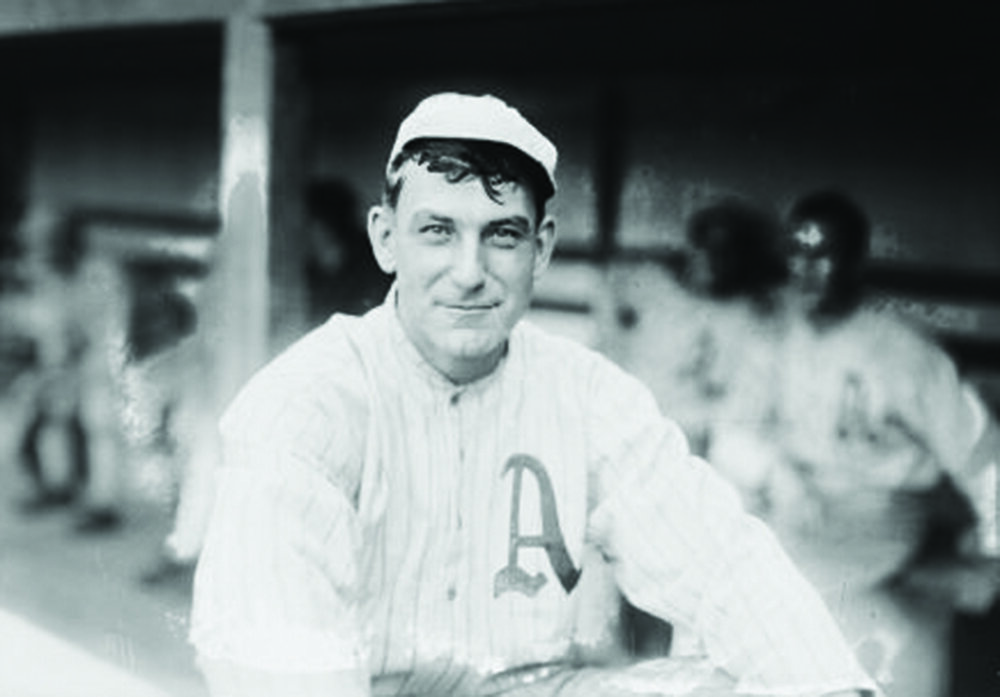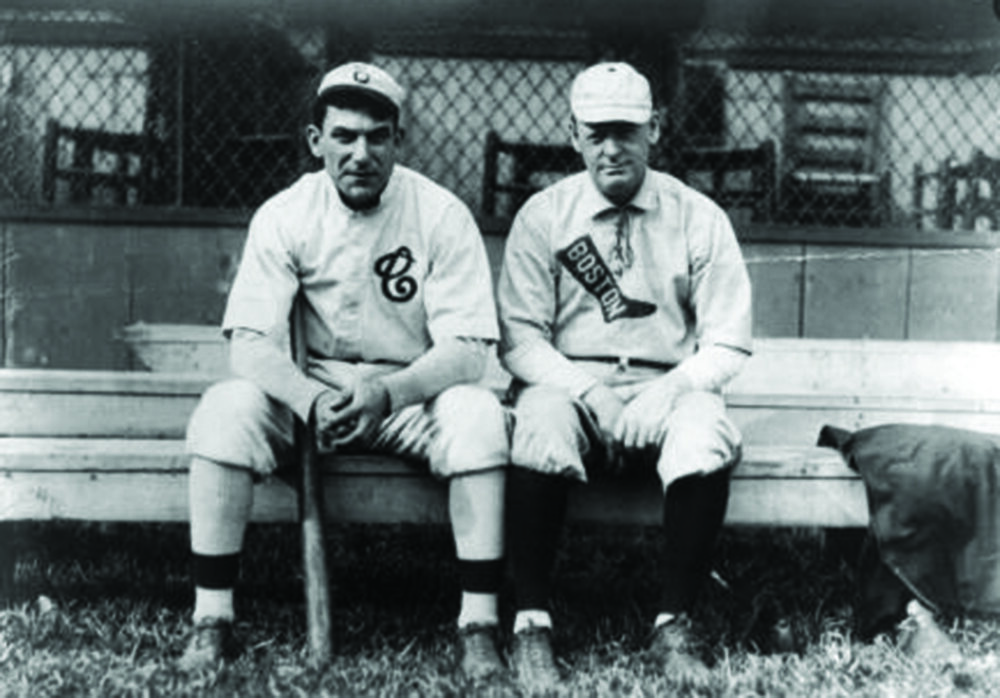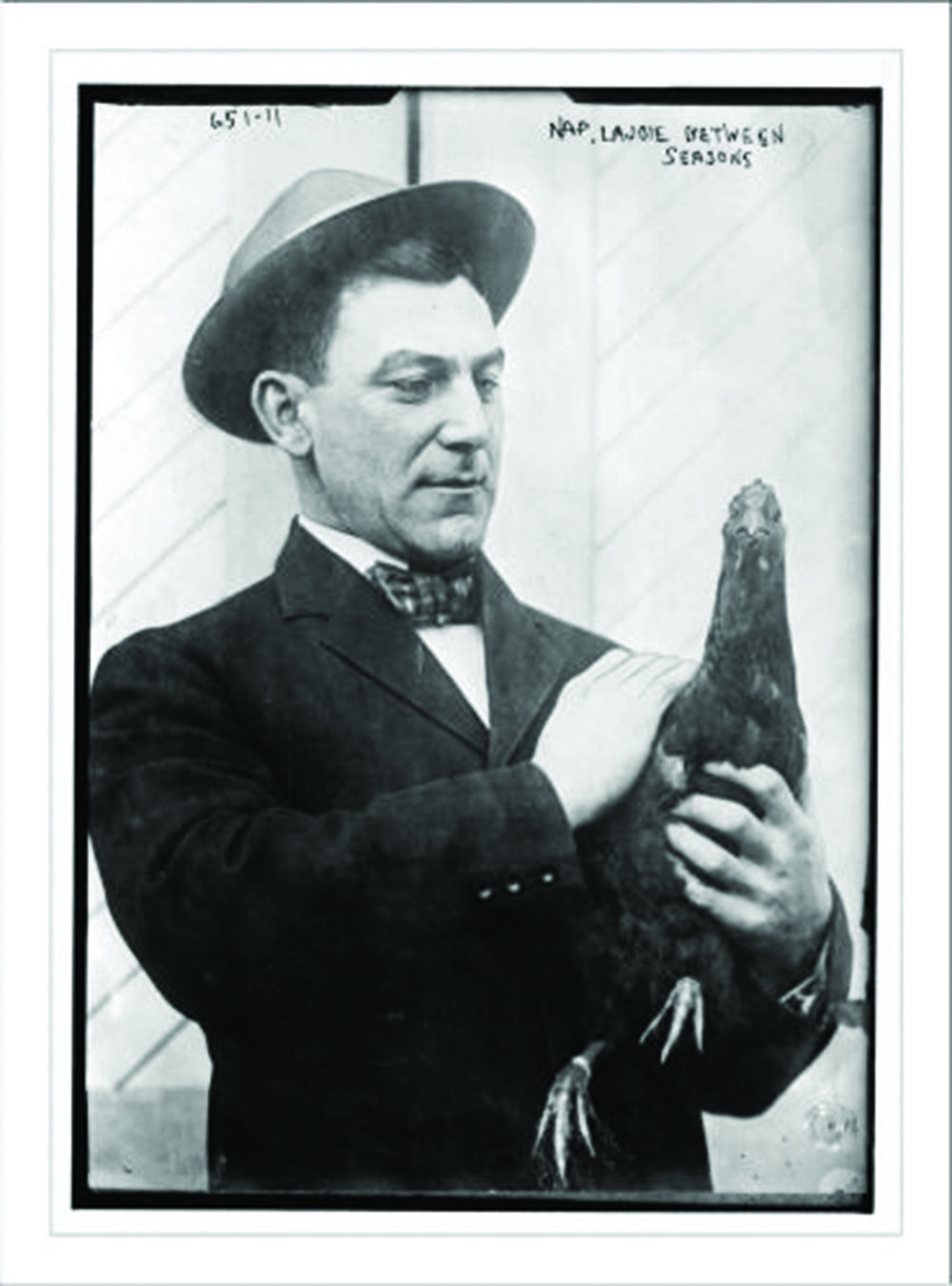Napoleon Lajoie, The Definition Of Grace
Posted by Steven Jordan on Apr 19th 2020
Written upon the Hall of Fame plaque of Napoleon “Larry” Lajoie, it reads “the most graceful and efficient second baseman of his era.” According to all accounts of his contemporaries and others who saw him play, Lajoie was graceful both in the field and at the plate. Billy Evans, an umpire who called many games in the American League for years called Lajoie “the good-to-look-at hitter.” While standing in the batter’s box, he typically would drag his bat in the dirt alongside the dish as he prepared to face the moundsman—as though he were a Master painter preparing himself to illuminate his canvas. For decades, many considered Lajoie to be the most graceful player ever to make his way onto a baseball diamond.
He possessed a distinctive style. Pretty much everything he did, it was with a certain artistic touch. He was agile, and smooth. He was considered a rather big man for the game during his time. He was 6’1’’ and weighed 195 lbs. Even with his sizeable frame he presented a coordinated and effortless rendition of the ultimate second baseman. In the words of the New York Press, “Lajoie glides toward the ball, [and] gathers it nonchalantly, as if picking fruit . . . .” He performed at the highest level at his position, and he was also a damn good hitter, winning a triple crown (in 1901), five batting titles and he led the league in RBIs three times. In his triple crown season, while with the A’s, Lajoie hit an astounding .426—to this day, it is still an all-time best for an American League player since 1900. Today he is seventh on the all-time list for doubles. His career spanned an impressive 21 seasons (1896 to 1916). He hung up his spikes with an amazing .338 career batting average. He was voted into the Hall of Fame in 1937.
What followed Lajoie’s era was the introduction of a much more lively ball, which had a corked center. Lajoie’s statistics glisten in the deadball era. During his time, Lajoie faced pitchers that had additional weapons in their arsenal, such as the spitball, the emery ball and the scuffball. Baseballs stayed in play for many more innings during the deadball era as compared to future periods.
A friend of Lajoie’s once said of him, “Old Nap Lajoie was the only man I ever observed who could chew scrap tobacco in such a way as to give a jaunty refinement to a habit vulgar and untidy in so many others.”
Lajoie’s parents were from Montreal, Canada. They had relocated to the town of Woonsocket, Rhode Island. Of French lineage, his mannerisms and features caught the eyes of others. He was considered a handsome man who was tall and dark; he had strong features and the ladies were said to be quite struck by him.
Larry served as the manager of Cleveland from 1905 to 1909. Although having a solid career win-loss percentage as a manager, .550, his managerial strategies were called into question by some critics. Lajoie had a practice of relaying signs to his outfield indicating what type of pitch was going to be thrown by his hurler. All too often his signs were intercepted by the opposition. Most notably Connie Mack always seemed to be well informed when playing Cleveland under Lajoie’s tutelage. Like many gifted ballplayers, Lajoie grew somewhat frustrated when his average players failed to live up to his playing capabilities.
When pitchers get up in the count, they often throw some waste pitches hoping the batter will bite. Lajoie grew frustrated by such attempts. He developed a unique way of taking advantage of these pitches. He developed quite a talent for hitting a baseball one-handed. Lajoie troubled many pitchers with his one-handed swing at garbage pitches.
In 1910, Cleveland and the New York Highlanders were locked up in a close game. Pitcher Russell Ford was throwing for the Highlanders. Ford was one the most adept hurlers at throwing the emery ball, which is when the pitcher scratches the baseball against a piece of emery paper hid in his glove. When scuffed and thrown properly the ball would sail in a peculiar fashion. Before the ballgame Ford had decided to pitch around Lajoie each time he came to the plate, so as not to get burned by the crafty hitter. Back in the deadball era, the pitchers did not throw so far to the outside when offering an intentional walk. His first time up, Lajoie quickly saw what Ford was attempting to do. Lajoie lunged outward and swung mightily with just his right hand, and lined a double to right field.
His next trip to the plate was with one man on base. Again Ford was intending to give Larry a free pass. This time Ford threw the ball further from the plate. Lajoie would have nothing of it. Once again Lajoie stretched outward and with one hand laced the ball for another double to right field.
The third time up, Lajoie took notice that the frustrated Ford was throwing even farther outside in an attempt to once again walk the batter. For a third consecutive time, Lajoie pounded the ball one handed and ended up at second base.
In his final at-bat that afternoon against Ford, Lajoie would not get a hit. So determined was the pitcher to walk Lajoie, that he threw four consecutive pitches behind Lajoie’s back! Ford finally walked Lajoie, but he lost the ball game in a rather ugly fashion.
After his major league playing days were over, at 42 Lajoie decided to manage the Toronto ball club in the International League. As player/manager Lajoie hit .380 and coached his team to the league pennant. After one more year of managing, Larry turned to more leisure activities. He spent many days playing golf and participating in country club tournaments. Later, dabbled in several things. He ran for Sheriff of Cuyahoga County in Ohio, but he failed to win the nomination. Thereafter he was named the Commissioner of the Ohio and Pennsylvania baseball league.
Before long he was involved in a variety of business ventures. He hooked up with a rubber company for a time, he sold truck tires for a while and eventually he set up a brass manufacturing company. Once Larry reached his seventies, he relocated to Florida. At the age of 83, Lajoie died of pneumonia.
Unfortunately, Larry never had the opportunity to play for a pennant winning ball club, despite going at his craft for 21 seasons. Nonetheless the Frenchman left his mark on the game, and very much deserves his place in the Hall of Fame. Many big baseball names considered Lajoie to be the best player the game had ever seen. Babe Ruth was once quoted as saying that he believed that Lajoie was the greatest natural hitter of all time. Evidently, like a deer, his swiftness and elegance were a thing to watch for all who had the pleasure.






